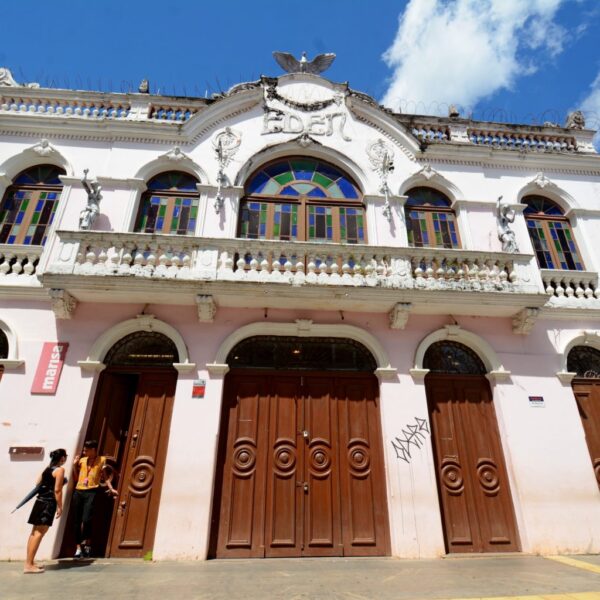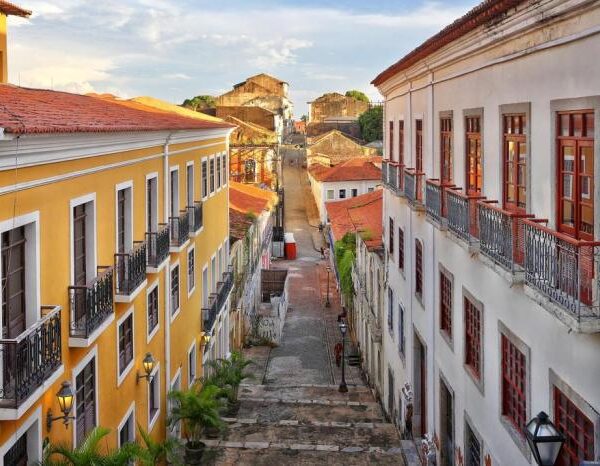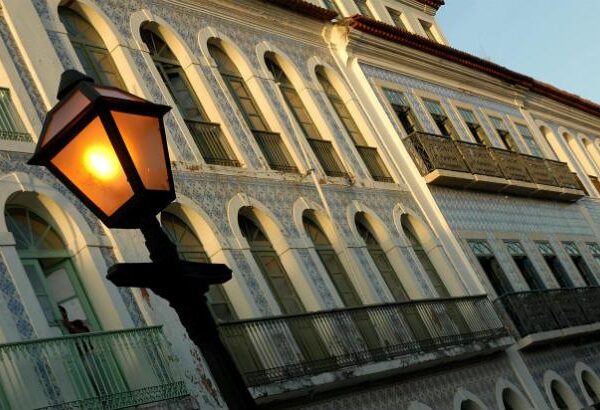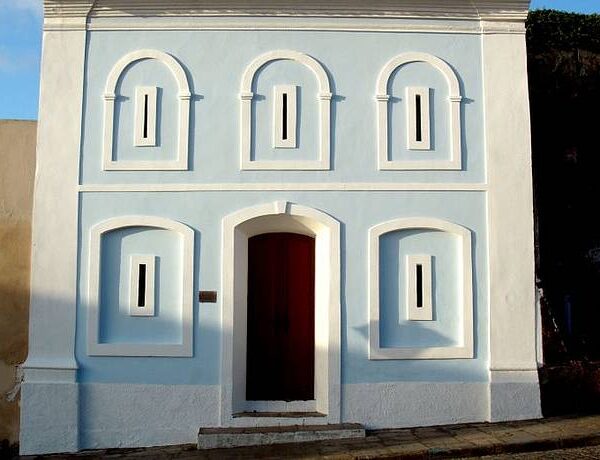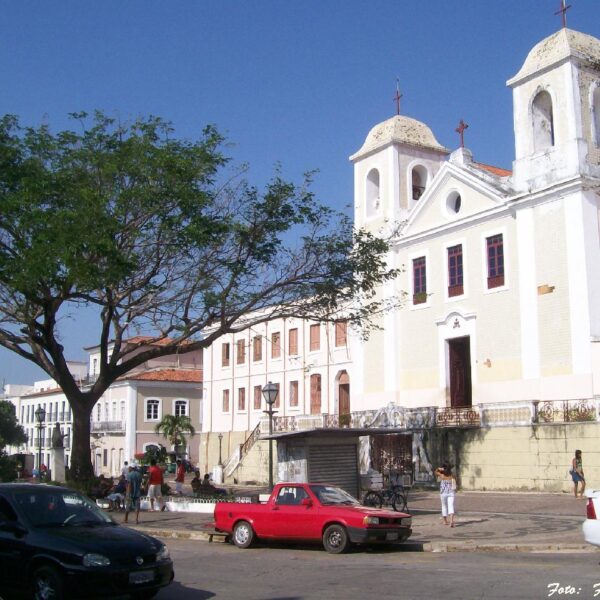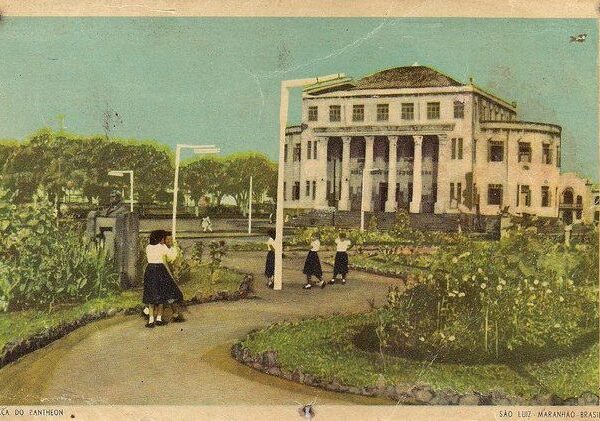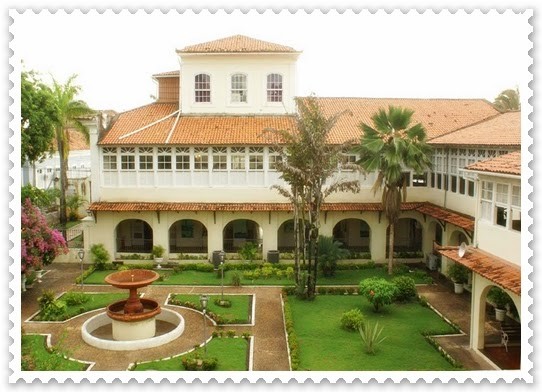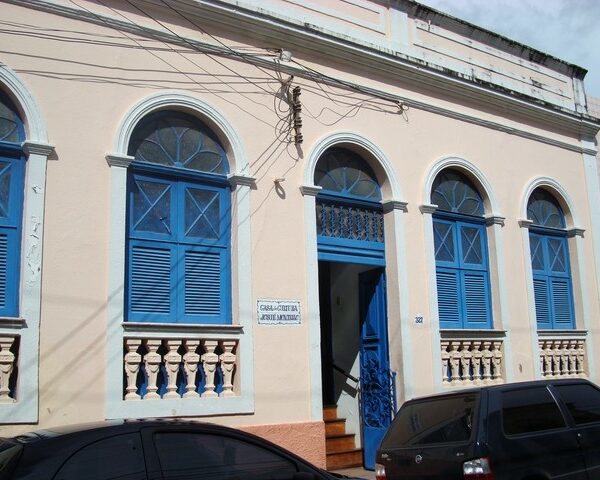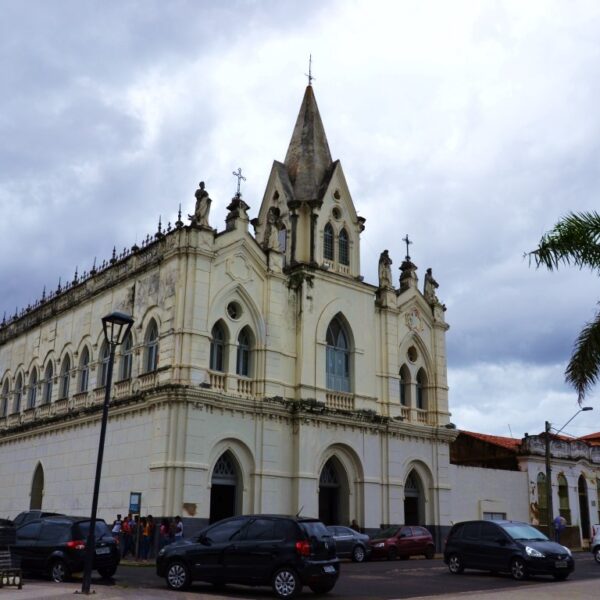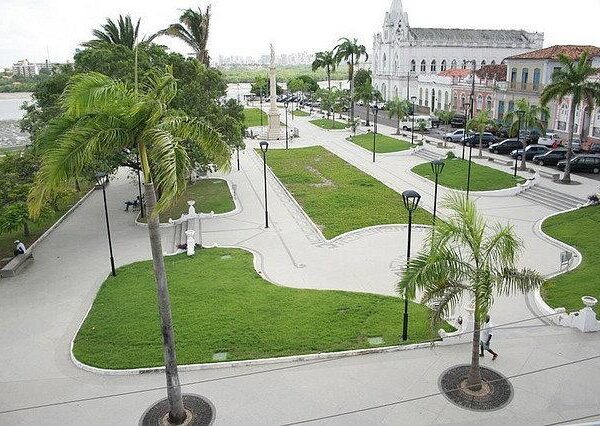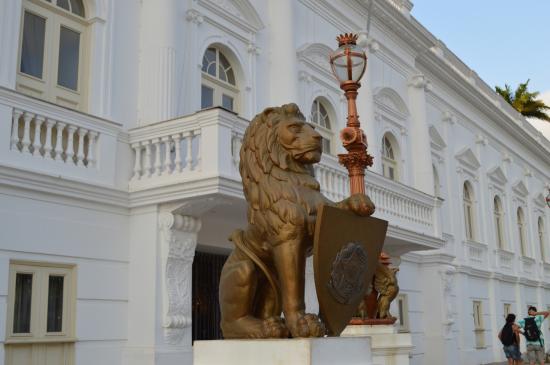Cine Éden is a magnificent cinema in São Luís do Maranhão whose façade has been preserved and retains its original features, including the name of the venue in relief. The urbanisation of São Luís and the emergence of cinemas In the first half of the 20th century, as São Luís […]
History, Culture and Architecture of São Luís do Maranhão
History, Culture and Architecture of São Luís do Maranhão
São Luís do Maranhão is a city with a rich and vibrant history, a unique culture and impressive architecture that reflects its colonial heritage.
Founded by the French, occupied by the Dutch and colonised by the Portuguese, São Luís is a mosaic of cultural and architectural influences.
São Luís do Maranhão is the only Brazilian capital to have been founded by the French and then colonised by the Dutch and Portuguese.
About 2,500 buildings are listed by the State Historical Heritage and 1,000 by IPHAN.
Part of the site was declared a World Heritage Site in 1997 for its Portuguese colonial architecture adapted to the local climate.
The main architectural feature of the historic centre is its concern with the hot and humid climate.
One of the solutions was to use tiles to waterproof the rammed earth facades. The floor plans are L or U shaped, with large roofs and shutters.
The architectural styles are terraced houses, single-storey houses and villas.
The sobrados are up to four storeys high, with the ground floor used as a shop and the other floors as homes.
The manor houses, magnificent sobrados, have many refined details, and the one-storey houses can be classified in different ways (e.g. full dwelling: door with two windows on each side; half dwelling: side door and two windows).
Strolling through the Historic Centre of São Luís, the largest open-air museum in the world, you’ll discover a bit of the island’s centuries-old history, palaces, squares, mansions, townhouses, churches, chapels, convents, fountains, museums, theatres and monuments that house the living memory of the people of São Luís.
1. Company history
1. Foundation and colonisation
- French foundation: São Luís was founded in 1612 by the French under the command of Daniel de La Touche, Lord of La Ravardière. They built Fort Saint Louis in honour of King Louis XIII of France.
- Dutch occupation: In 1641 the city was occupied by the Dutch, who stayed until 1644.
- Portuguese colonisation: From 1645, the Portuguese reconquered the city and began a period of colonisation that shaped the local culture and architecture.
2. Colonial economy
- Cotton Cycle: In the 18th century, São Luís’ economy thrived on the production and export of cotton, which led to great urban and architectural development.
- Slavery: African slave labour was widely used on the plantations and in the construction of the city, leaving a deep mark on the local culture and population.
3. Independence and Modernisation
- Brazilian Independence: In 1822, São Luís joined the Brazilian independence movement and the city continued to develop as an important commercial and cultural centre.
- Modernisation: In the late 19th and early 20th centuries, São Luís underwent processes of modernisation, including the introduction of electric trams and the expansion of urban infrastructure.
2. Culture
1. Bumba Meu Boi
- Description: One of the most important cultural manifestations of Maranhão, this is a dramatic dance that mixes indigenous, African and European elements, celebrating the legend of the resurrected ox.
- Festivities: Performances take place mainly during the June fiestas, with groups (sotaques) of different styles performing throughout the city.
2. Tambor de Crioula
- Description: Afro-Brazilian dance in honour of São Benedito, characterised by drumming, singing and circular dancing.
- Afro-Brazilian Culture: Reflects the strong presence of Afro-Brazilian culture in São Luís, as an expression of resistance and cultural identity.
3. Reggae
- Description: São Luís is known as the “Brazilian Jamaica” due to the popularity of reggae. The city has a vibrant reggae scene, with concert halls, radio stations and parties dedicated to the genre.
- Events: Various reggae festivals and events take place throughout the year, attracting lovers of the genre from all over Brazil and the world.
3. Architecture
1. Colonial Mansions
- Description: The historic centre of São Luís is famous for its colonial mansions, many of which are decorated with Portuguese tiles that help regulate the temperature inside.
- Conservation: Many of these mansions have been restored and preserved, housing museums, shops, restaurants and residences.
2. Portuguese tiles
- Description: One of the most striking features of the architecture of São Luís is the colourful tiles that adorn many of the building facades. These tiles were brought from Portugal and help to give the city its distinctive charm.
- Function: As well as being decorative, tiles help to protect buildings from intense heat and humidity.
3. Churches and monasteries
- Cathedral of Sé: Located in the historic centre, the Cathedral of Sé is an impressive example of colonial religious architecture, with a richly decorated interior.
- Church of Santo Antônio: Another important religious building reflecting Portuguese Baroque architecture.
4. Arthur Azevedo Theatre
- Description: One of the oldest theatres in Brazil, inaugurated in 1817, it is a cultural and architectural landmark of the city.
- Style: It combines neoclassical and baroque elements and is an important venue for cultural and artistic performances.
Historical curiosities about São Luís do Maranhão
São Luís do Maranhão, capital of the state of Maranhão, is a city rich in history and culture, full of interesting curiosities. The foundation and the cultural mix São Luís do Maranhão was founded by the French, invaded by the Dutch and colonised by the Portuguese. The result of this […]
History and Colonial Architecture of São Luís do Maranhão
Discover the rich history and colonial architecture of São Luís do Maranhão, a heritage site that reflects the cultural heritage and unique beauty of one of Brazil’s most important historical centres. The Historic Centre of São Luís do Maranhão stands out for the uniformity and simple, regular, beauty of its […]
Cafua das Mercês: Preserving Black Memory Today
Cafua das Mercês – Black Museum The Cafua das Mercês, located in São Luís do Maranhão, is a former slave depot that tells the story of black people through the exhibition of works of art and objects from the time of slavery, including instruments of torture. Preserving memory Today, the […]
Convent and the Church of Nossa Senhora do Carmo History
Convent and Church of Nossa Senhora do Carmo in São Luís do Maranhão The Convent and the Church of Nossa Senhora do Carmo are located in the Praça João Lisboa in São Luís do Maranhão and belong to the Capuchin Order. The church is one of the most important and […]
Benedito Leite Public Library’s Rich History
Benedito Leite Public Library in São Luís do Maranhão The Benedito Leite Public Library, located in São Luís do Maranhão, is one of the most important public libraries in Brazil and the second oldest in the country. Founded on 3 May 1829, the library is an important centre for cultural […]
Cristo Rei Palace: Architecture of the 19th Century
Cristo Rei Palace in São Luís do Maranhão The Cristo Rei Palace is located in the Largo dos Amores and is an example of 19th century Ludovico architecture. Historically, it served as a residence for nobles, housed Jesuit schools and was the seat of the Archbishopric. Today, the palace houses […]
Josué Montello House of Culture in Maranhão History
Josué Montello House of Culture in São Luís do Maranhão The Josué Montello House of Culture is part of the Cultural System of the State of Maranhão and aims to promote studies, research and work in the fields of Literature, Arts, Social Sciences, History and Geography, covering the artistic and […]
Church of Nossa Senhora dos Remédios History
Church of Nossa Senhora dos Remédios in São Luís do Maranhão The Church of Nossa Senhora dos Remédios dates from 1719 and is part of the urban ensemble of the Gonçalves Dias Square, formerly known as the Largo dos Remédios. Festivals were held here during the month of October, making […]
Gonçalves Dias Square: A Historic Landmark
Gonçalves Dias Square in São Luís do Maranhão Gonçalves Dias Square was inaugurated in 1873 and is located on land belonging to the Order of São Francisco, on a promontory overlooking the Anil River, overlooking the São Francisco Bridge and the neighbourhood of the same name. Location and characteristics It […]
Catarina Mina: The Story Behind the Alley
Catarina Mina Street in São Luís do Maranhão Beco Catarina Mina in São Luís do Maranhão was named in honour of the slave Catarina Rosa Pereira de Jesus, known for her great beauty. Through hard work and “favours” from the wealthy Portuguese, Catarina managed to raise enough money to buy […]
Casa Real Empório: History and Culture Combined
Casa Real Empório in São Luís do Maranhão The Casa Real Empório, located in the Historic Centre of São Luís, is a pleasant place to meet friends, have a quick snack in the middle of the afternoon or take a break after walking around the city centre. Located on Rua […]
Palácio dos Leões: A Historical Landmark Tour
History of the Palácio dos Leões in São Luís do Maranhão The Palácio dos Leões is one of the most important historical and architectural landmarks in São Luís, Maranhão. With a built area of 3,000 square metres, the palace is divided into three wings: residential, administrative and visitor. Video about […]
